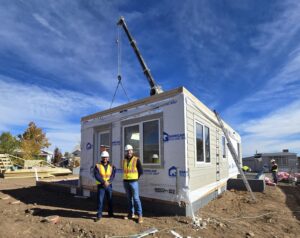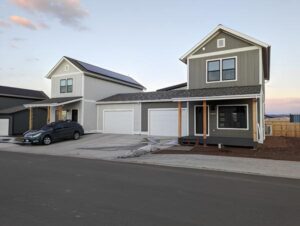This week marks the third time in as many weeks that I have been asked to observe the foundation in a historic Denver home and found that the wood main floor framing is supported by wood posts that bear directly on soil floor of the crawlspace or basement. A photo of such an occurrence is shown below.

Many “real estate industry home inspectors” will flag this situation as “not meeting the current building code”. Because of the age of the home these posts do not technically need to meet the current codes and in many cases have been performing adequately for years. What is concerning from a structural standpoint is that these posts will concentrate the floor loads it supports in a smaller area than we would do with today’s construction standards. This load concentration in and of itself is not always detrimental to the structure, many times the bearing soils can support this load. The concern lies in the potential for movement of the floor framing should the bearing capacity of the soil change. The addition of moisture to the soil would likely cause such a change and what do we typically find in historic Denver homes? Masonry or unreinforced concrete foundations which are cracked and susceptible to water intrusion, not to mention the occasional burst water pipe. Even if the water intrusion in a basement isn’t enough to cause a significant change in the bearing capacity of the soils, standing water may rot the base of wood posts.
A safe way to make sure that your home is protected would be to install concrete pad footings below these wood posts to distribute floor loads to a greater area of bearing soils and to raise the post off of the ground to protect it from saturation. A professional structural engineer, such as the friendly structural engineers at EVstudio should be contacted to review the existing floor framing and properly size concrete pad footings.









